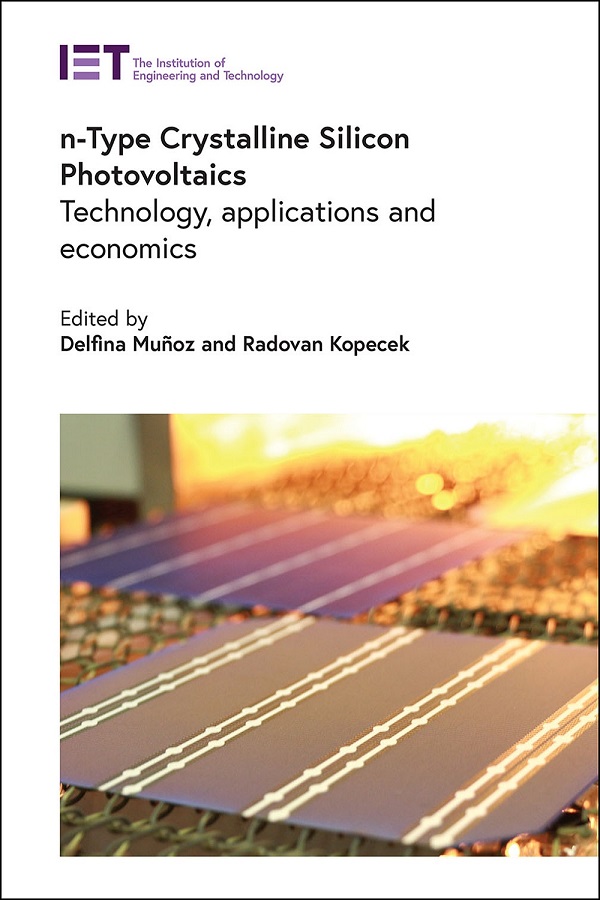- Agricultural Engineering and Technology
- Applied Physics
- Built Environment
- Computing and Networks
- Control, Robotics and Sensors
- Electrical Regulations
- Electromagnetics and Radar
- Energy Engineering
- Healthcare Technologies
- History and Management of Technology
- IET Codes and Guidance
- Manufacturing
- Materials, Circuits and Devices
- Model Forms
- Security
- Telecommunications
- Transportation

n-Type Crystalline Silicon Photovoltaics
Technology, applications and economics
Edited by Delfina Muñoz, Radovan Kopecek
Most solar cells currently in commercial use are p-type solar cells, due to their historically lower cost and ease of manufacture compared to n-type solar cells. However, due to improved manufacturing technology and falling cost in general, the cost difference between the two types has shrunk, making n-type solar cells an attractive option for future commercial high-efficiency solar cells.
n-type solar cells are less prone to light-induced degradation, and are also less affected by iron impurities. This makes n-type solar cells more efficient compared to their p-type counterparts, with efficiencies of up to 25% being feasible in production.
Challenges in the manufacturing process and regarding degradation still remain to be solved, in order to realise n-type solar cells' full potential. The challenges, solutions and opportunities afforded by n-type solar cells are explored in this volume.
This book conveys current research and development for n-type solar cells and modules. With a systematic build-up, chapters cover the base material, wafer production, and the cell concepts including recent passivation techniques. Also covered are the related issues of solar module technology, such as encapsulation and interconnection, and degradation process management, including comparisons with p-type solar cells. In addition, economic and ecologic aspects and cost modelling are addressed.
This thorough, concise reference is a valuable resource for researchers from industry and academia working in the field of photovoltaics.
About the Editors
Dr Delfina Muñoz is a Strategic project manager and senior expert at the Solar Technologies Department of the French Atomic Energy and Alternative Energies Commission in France. She started the heterojunction solar cells research in her Ph.D. at Universidad Politécnica de Cataluña developing laboratory heterojunction devices. In 2008, she joined CEA-INES and since then she has been improving heterojunction technology from the lab to the fab. She is very active at the European level leading international projects on heterojunction solar cell combining device structure with advanced concepts. She is on the board of ATAMOSTEC in Chile and at the ETIP PV steering committee contributing to roadmap and strategic agendas for PV. Her expertise goes from materials to modules with more than 100 contributions worldwide on PV. She still combines her project activity with the laboratory, directing Ph.D. students and developing heterojunction solar cells for the future photovoltaic technology.
Dr Radovan Kopecek obtain the Dipl. Phys. degree at the University of Stuttgart in 1998. In 2002, he completed his Ph.D. dissertation in the field of c-Si thin film silicon solar cells in Prof. Ernst Bucher's group at the University of Konstanz. One of the founders of ISC Konstanz, Dr Kopecek is since 2007 the leader of the advanced solar cells department dealing with several European, national research projects and technology transfer in the field of silicon feedstock and solar cell development, focusing on n-type devices. Since 2022, he has been a board member of ESMC, advancing deployment of solar energy, and from 2022, board member of ATAMOSTEC in Chile. He has published numerous key papers.
Publication Year: 2022
Pages: 370
ISBN-13: 978-1-83953-176-7
Format: HBK
Editors: Delfina Muñoz, Radovan Kopecek
